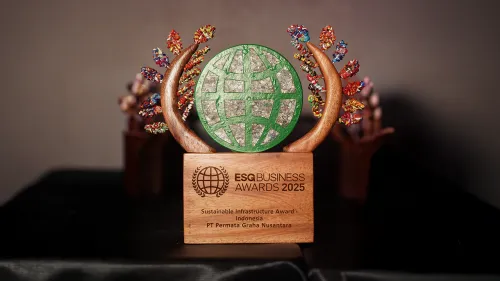
Danfoss, McKinsey craft roadmap for emission-heavy sectors’ decarbonisation
The highest carbon emissions were in the use of products in their lifecycle.
Danfoss, a global components manufacturer, has developed a roadmap with McKinsey to decarbonise the supply chain of some of the world's most emission-heavy sectors.
According to Danfoss CEO Kim Fausing, the Nordic company, which produces thousands of components for heating and cooling, drives, and power solutions each year, has a significant opportunity to make a powerful environmental impact.
"We want to be the best-in-class preferred partner for customers looking to decarbonize and are taking our own medicine—continuously making the way we run our business more energy efficient," he said.
To achieve their ambitious decarbonization goals, Danfoss partnered with McKinsey sustainability experts to develop a digital platform called Zero Carbon Product. The tool assesses carbon emissions along the entire supply chain of each product and maps Danfoss's bill of materials against a library of around 600 decarbonization levers spanning 100 material categories.
READ MORE: APAC struggles with sustainable practices in ESG areas
McKinsey said in a report the partnership identified that while the highest carbon emissions come from the use of products across their entire lifecycle, the second largest source of emissions lies in the materials and construction processes. Product redesign and an alternative supply chain offered two possible ways forward.
At the same time, McKinsey conducted customer interviews to better understand the price elasticity of low-carbon products. This would help Danfoss determine which suppliers to team up with to pilot some of these new sustainable product line solutions.
Danfoss worked with McKinsey to build new capabilities, including embedding carbon assessments into product engineering and retraining employees to add decarbonization to their procurement strategy.
The next step involved looking at the overall product launch strategy. While the company started with the Climate Solutions segment of its business, the goal is to complete this same process across its other two business units: Power Solutions, which makes up half of the overall business and Power Electronics and Drives, which accounts for another 30%.
Danfoss is currently working with McKinsey in the proof-of-concept stage for its Power Electronics and Drives business as part of a two-and-a-half-year plan to roll out low-carbon products across the entirety of the business.
Danfoss aims to reduce all direct and indirect emissions from purchased energy by 46.2% by 2030, reduce emissions across the value chain by 15%, and become carbon neutral across its operations.












